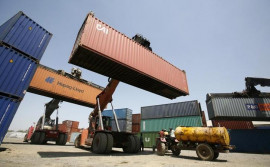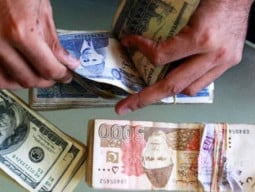
One of the key reasons for the increasing budget deficit from July through November was roughly Rs625-billion cost of domestic and foreign debt servicing, said officials in the Ministry of Finance.
The overall budget deficit - gap between expenditures and incomes - has widened to 2.3% of Gross Domestic Product (GDP) or Rs826 billion during the July-November period of FY18, said the officials. This was despite the fact that the four federating units showed Rs150 billion as cash surplus during the five months. Excluding provincial savings, the federal budget deficit would jump over Rs970 billion in just five months.
These figures are startling and negate the federal government’s claim that it has reversed the trend of the last fiscal year when the budget deficit peaked to a historic high of Rs1.863 trillion.
The trend suggests that the annual budget deficit target of 4.1% of GDP or Rs1.480 trillion that parliament had approved in June last year has already become unrealistic in just five months. The Rs826-billion budget deficit was equal to 56% of the annual target.
The United States’ decision to withhold Coalition Support Fund disbursements would also adversely affect Pakistan’s fiscal operations.
During the recently concluded talks, the International Monetary Fund (IMF) had informed the finance ministry that the budget deficit would swell to 5.4% of GDP or over Rs1.9 trillion. After assuming office, the newly appointed Minister of State for Finance Rana Muhammad Afzal said that the government would try to contain the budget deficit to 5% of GDP.
But results of the first five months suggest that the annual budget deficit may even exceed last year’s level of Rs1.863 trillion. During the first half of the last fiscal year, the finance ministry had booked Rs799 billion or 2.4% of GDP budget deficit.
The budget deficit and the current account deficit remain the two biggest challenges for Pakistan’s economy that overshadow the government’s economic performance in other areas. Because of these twin deficits, there are apprehensions that Pakistan may go back to the IMF for yet another bailout package.
Last month, the IMF stressed that Pakistan needed to undertake strong reforms to maintain external stability, ensure debt sustainability and support higher economic growth in the medium term by containing the budget deficit.
IMF’s Mission Chief for Pakistan Harald Finger said that the key challenge for Pakistan’s economy was managing through the political situation in the mid-term and during this time focusing on stability issues, declining reserves and containing fiscal deficit.
However, as elections approach, the government has opened the purse for spending on politically motivated development schemes.
One of the main reasons behind the Rs826-billion budget deficit was ballooning debt servicing repayments. From July through November of the current fiscal year, the domestic and foreign debt servicing increased to roughly Rs625 billion, said the officials.
The Rs625 billion debt servicing was almost half of the annual budget earmarked for this purpose. For the current fiscal year 2017-18, the federal government has earmarked Rs1.363 trillion for domestic and foreign debt servicing.
The officials said that the government’s growing reliance on short-term domestic and foreign borrowings has significantly increased the debt servicing cost. The 7.2% rupee devaluation since July last year would also increase the government’s cost of external debt servicing.
Banks are reluctant to invest in long-term debt instruments of the federal government, which has in return increased the cost of debt servicing on a quarterly basis.
The central government’s debt and liabilities increased to Rs21.4 trillion by June last year, which were about 68% of the total national output and is considered a dangerous level.
Federal development spending in the first five months amounted to roughly Rs180 billion or about 18% of the annual budget. This is significantly lower than the limit set by the National Economic Council. The federal development spending should have been close to Rs300 billion.
A significant chunk of the federal development spending has gone to parliamentarian schemes.
Published in The Express Tribune, January 6th, 2018.
Like Business on Facebook, follow @TribuneBiz on Twitter to stay informed and join in the conversation.































1714024018-0/ModiLara-(1)1714024018-0-270x192.webp)









COMMENTS (3)
Comments are moderated and generally will be posted if they are on-topic and not abusive.
For more information, please see our Comments FAQ